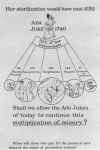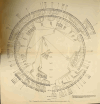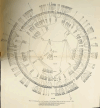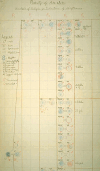"At a Glance:" The Role of Diagrammatic Representations in Eugenics Appropriations of the "Infamous Juke Family"
- PMID: 38345736
- PMCID: PMC11111576
- DOI: 10.1007/s10739-023-09755-3
"At a Glance:" The Role of Diagrammatic Representations in Eugenics Appropriations of the "Infamous Juke Family"
Abstract
The case of the Juke family is one of the most notable episodes of the history of eugenics in the USA. The Jukes were initially brought to the fore in the 1870s by a famous investigation that aimed at estimating the interplay of heredity and environment in determining the problems of poverty and crime. This inquiry triggered a harsh confrontation between two polar interpretations of the study, an "environmentalist" one and a "hereditarian" one. It was with the later reassessment of the case made by the Eugenics American Office (ERO) in the 1910s that the controversy was considered closed with the victory of the eugenicists' hereditarian stance. As a result, the family was made a living proof of the alleged hereditary nature of crime and pauperism and a case study in support of the eugenicists' plea for the sterilization of people deemed the bearers of hereditary defectiveness. In this article, I explore the role played by pedigrees and other diagrammatic representations in the eugenicists' appropriation of the meaning of the case of the Juke family and the role played by this appropriation in asserting the superiority of the ERO's method of work over rival approaches.
Keywords: Arthur Howard Estabrook; Eugenics; Jukes; Pedigrees; Richard Louis Dugdale.
© 2024. The Author(s).
Conflict of interest statement
The author has no competing interests to declare.
Figures

















References
-
- Adams John. Exposition and illustration in teaching. New York: Macmillan; 1910.
-
- Anonymous. 1874a. A mother of criminals. The New York Times, December 19, p. 6.
-
- Anonymous. 1874b. Crime and its growth. The New York Times, December 20, p. 7.
-
- Anonymous. 1875a. Report of the Department of the Interior, Bureau of Education, November 1874. In Executive documents printed by order of the House of Representatives. 1874–‘75, 43rd Congress, second session, Vol. vii, cxix–cxx. Washington: Government Printing Office.
Publication types
MeSH terms
Grants and funding
LinkOut - more resources
Full Text Sources
Research Materials

